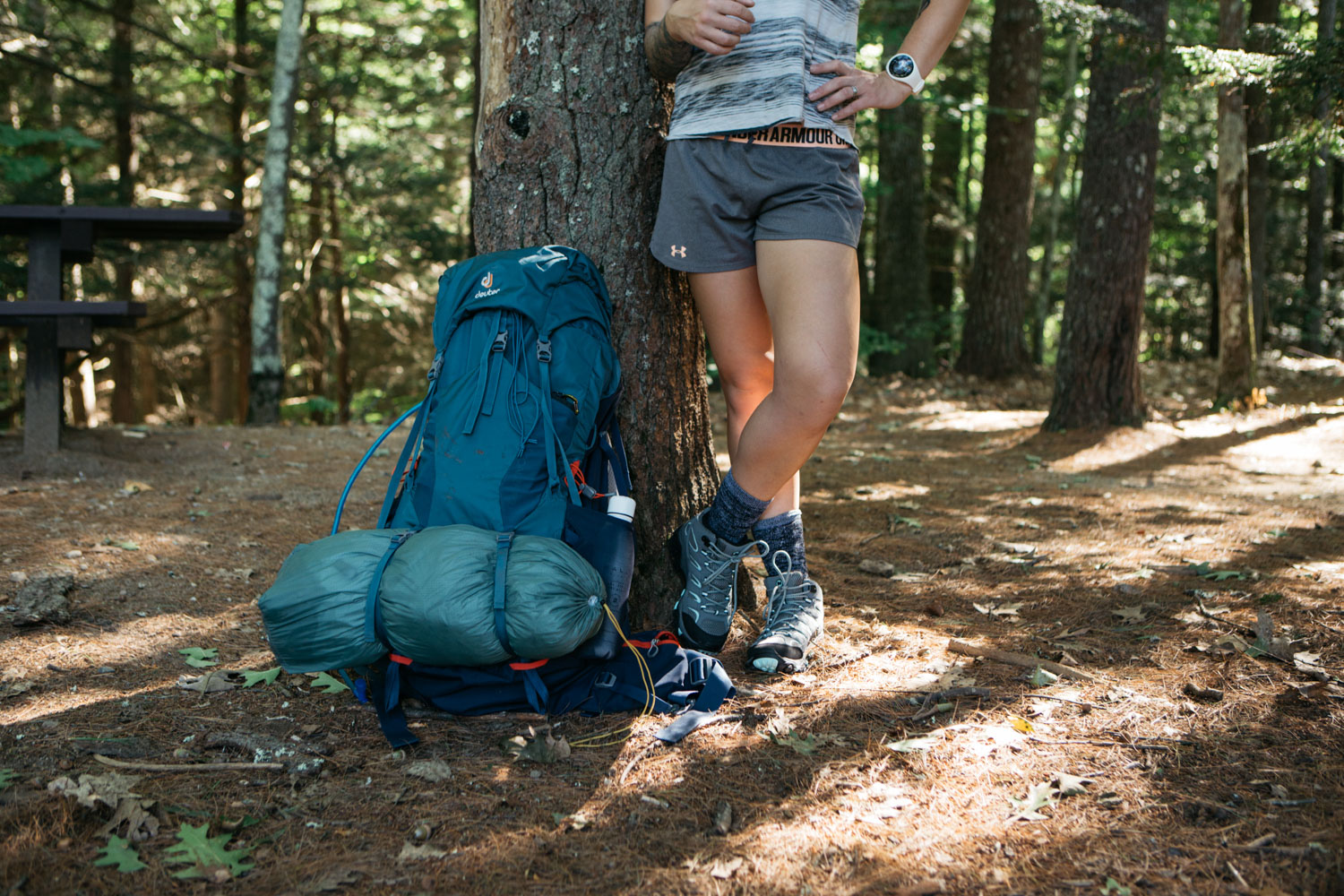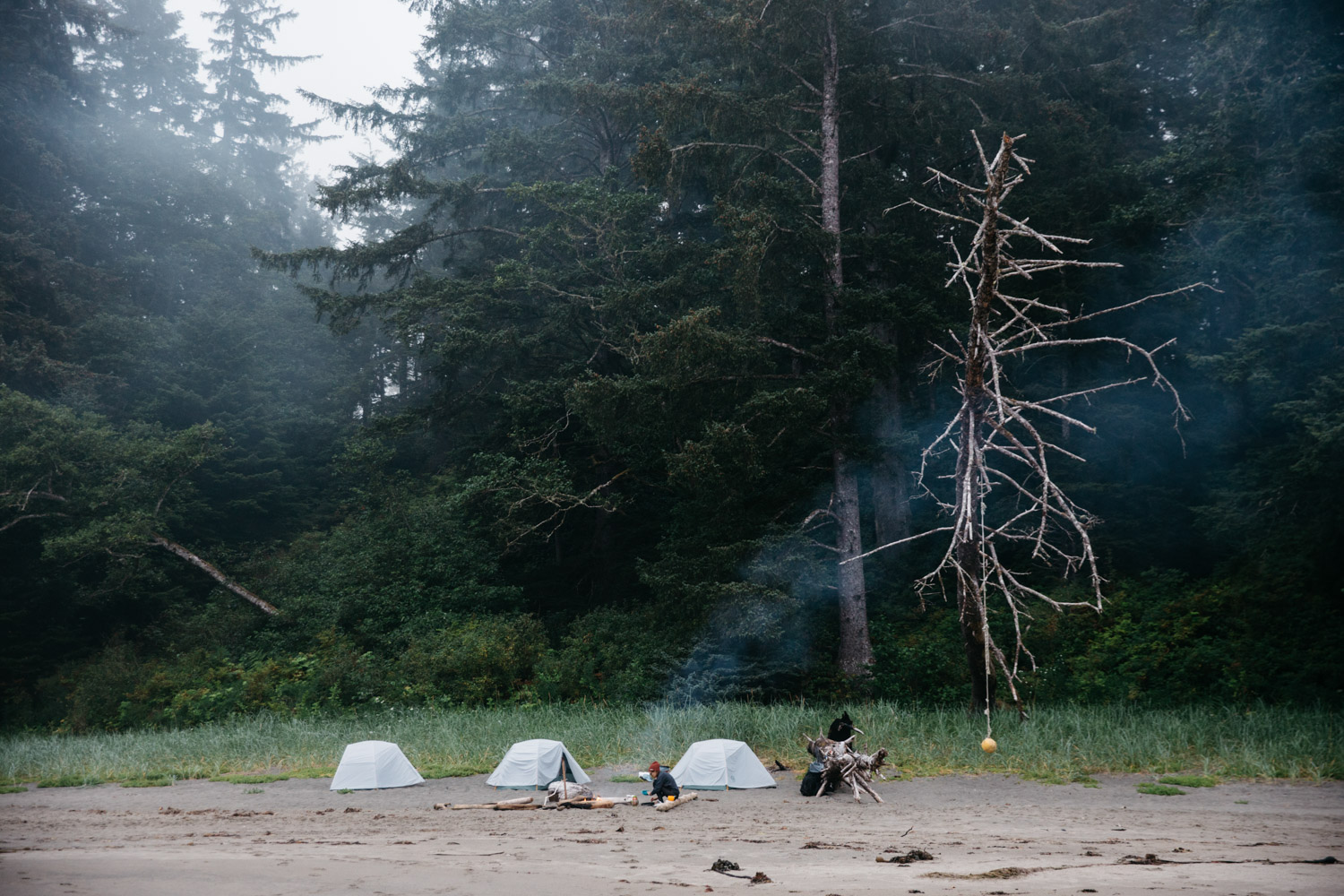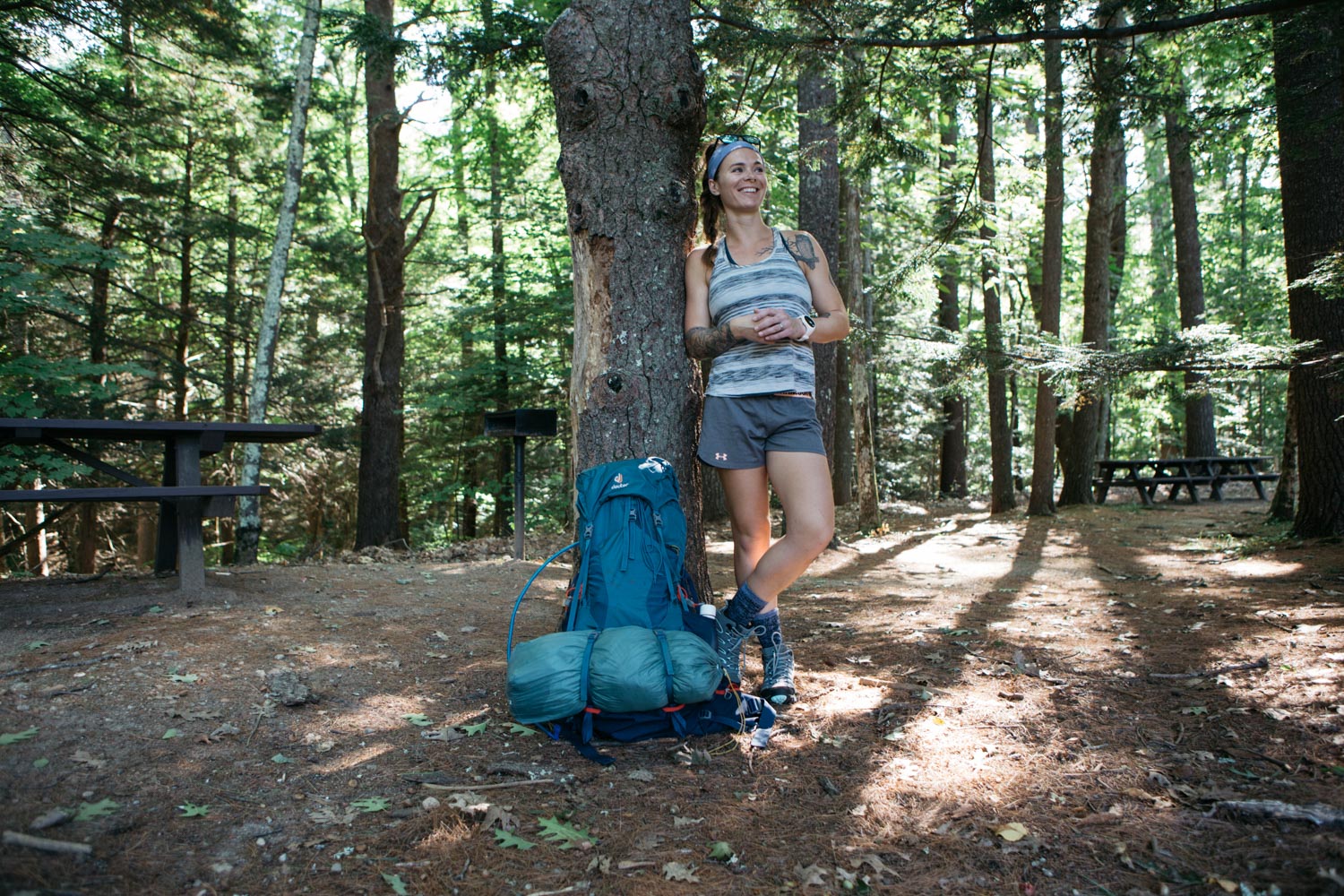Backpacking Starter Guide

In partnership with Merrell, by Hailey Hirst and Gale Straub
Backpacking can feel pretty intimidating if you’ve never done it before. Preparing to plan a trip and pack all you need for multiple days away from the comforts of home—especially if you don’t own the pack or necessary gear already—has the definite impression of a high barrier to entry. But with the right research and preparation, you might be surprised to learn that it’s not as complicated as it may seem to get started.
Six things to consider as you plan a backpacking trip:
Route
Choose a location by deciding how far you can travel, how long you want to be gone, what you want to see, and how the weather looks seasonally. Interested in an alpine lake? A mountain summit? A canyon gully? Plan your route with maps, guide or reference books, and decide if the trail distance, elevation, and overall conditions suit your ability and fitness level.
Keep in mind, when you get down to essentials, backpacking is hiking with everything you need to stay one night (or more) on your back. You likely know what your experience level is like for hiking if you’re considering a backpacking trip. Give yourself lots of grace when you’re planning so that you’ll get to where you need to rest your head before dark.
These hiking apps might help you get started!

Ten Essentials
First assembled in the 1930s, the list of Ten Essentials includes items you should bring with you every time you step into the backcountry. The modern list looks like this:
- Navigation
- Headlamp
- Sun protection
- First aid
- Knife
- Fire
- Shelter
- Extra food
- Extra water
- Extra clothes
Learn more about how to integrate these items into your packing list from The Mountaineers.
Packing List
Including the ten essentials, your packing list will vary with the logistics of your route’s location, trip length, and seasonal weather. Standard backpacking checklists are a great place to start and reading about real experiences can be helpful too (like our Packing for a Four Day Backpacking Trip list with post-trip reflections).
As far as finding gear to fill out your list (especially the big-ticket items like a tent and backpack if you don’t already have one) remember that you can always rent gear, or find quality used gear at exchanges or online marketplaces. It doesn’t have to cost an arm and a leg to get outfitted.
We definitely encourage your heading to your local outfitter for their recommendations as well: they can help you find the right fitting backpack and boots—two items that can make a world of difference when it comes to comfort on the trail.
- Securing the pack, wearing Merrell Moab Mid Waterproof hiking boots.
- Ready to continue on the trek. Hiker pictured in Merrell Ontario Mid hiking boots.
Leave No Trace
How far from water should the tent be? Where should you pee? What will you do with soapy water, toothpaste spit, or toilet paper? The principles of Leave No Trace (LNT) can help answer these questions. Learn how to dispose of waste properly, respect wildlife, and be considerate of other visitors (among other things) before you hit the trail.
Our favorite LNT carry? The Kula Cloth, an anti-microbial pee cloth that keeps you dry (and looks cute on your pack!).
Safety
Being safe while backpacking includes items to pack, in addition to situational awareness and preparation. Know your route and ask yourself questions like: What conditions can you expect? Will you have the proper footwear for the terrain? And clothes for the weather? What would you do if you encounter wildlife? Are sudden storms common to the location?
Along with the essentials for navigation, illumination, and proper layers to wear, bring along your wilderness first aid kit and know how to use it. Other safety items include a multi-tool, knife, whistle, as well as bear spray and proper food storage containers if you’ll be in bear country.
Have a plan and tell someone you trust where you’ll be, when you expect to return, and what to do if you’re not back by the expected return time.

Finding a Group
Solo outdoor experiences can be incredible, but if you’d rather venture out with company, there are a myriad of ways to find adventure friends—including formal groups and organizations that host backpacking trips and other excursions.
If you’re especially new to the outdoors (or need to brush up on your skills), a wilderness class is a great investment. This is another opportunity to drop into your local outfitter (REI for example) to inquire about programming to give you an extra boost of confidence outside.
And Some Words of Advice:
We took to our She Explores Podcast Listener Facebook Group to ask: If you could give advice to a first-time backpacker (or your past self before your first trip) — what would you tell her?
“Woo, just go! Don’t overthink it. And don’t over pack. My first trip I thought I was going to take, my pack weighed well over 50lbs.” — Miranda Birt
“Ask questions! Everyone starts as a beginner, so don’t be embarrassed if you don’t know. Hopefully you’re with humble and compassionate friends that will happily help. And borrow clothes if you don’t have what you need…especially for winter backpacking.” — Mandy Schenkemeyer
“You don’t have to have the best gear, lightest gear, newest gear. Just get out and go!! You’ll figure out what works and what doesn’t as you go!! And trekking poles are a saving grace!!” — Ali Hyatt
“Please know that preparing for a trip whether your first or fiftieth comes with anxiety. My tip: tell yourself that it all falls away after you take your first step on the trail. It truly does! Im excited for you.” — Caro Luevanos-Garcia
This article was produced with support from our brand partner Merrell, who believe the outdoors is for everybody and every body. The hikers featured in these photographs are wearing Moab 2 Mid Waterproof hiking boot and Ontario Mid Waterproof hiking boot.



[…] post Backpacking Starter Guide appeared first on She Explores: Women in the […]